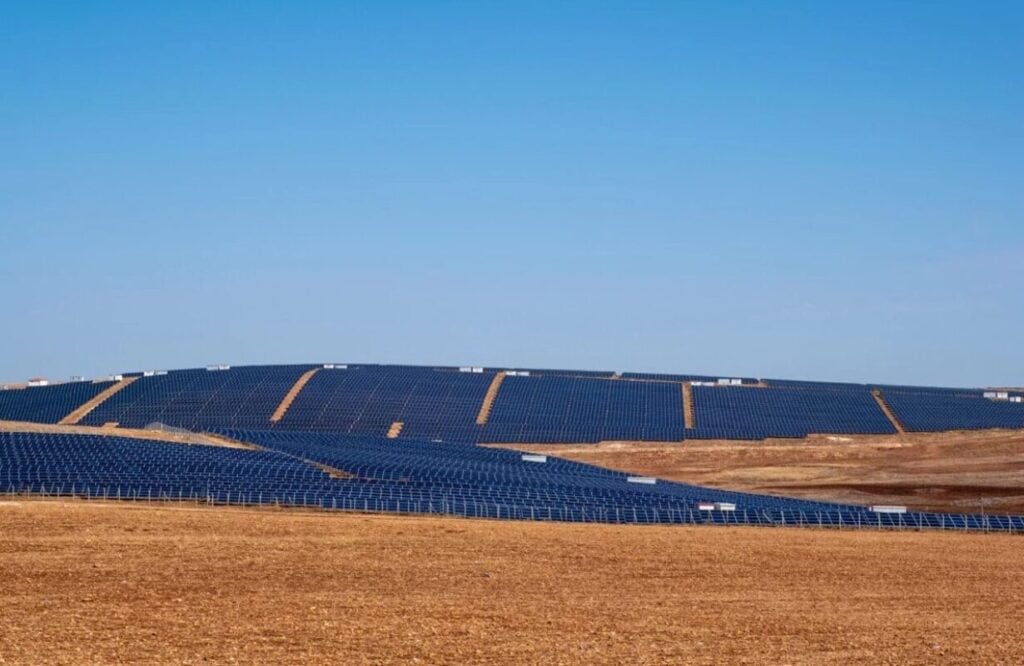
The world’s cumulative installed solar generation capacity has doubled between 2022 and 2024, to reach over 2,000TWh, which will be the driving force behind new renewable power capacity meeting global growth in electricity demand to 2030.
These are some of the key conclusionsfrom Ember Climate’s latest report, the ‘2025 Global Electricity Review’, published today. The report is encouraging reading for the global renewable power sector, with the world adding 858TWh of new clean energy generation in 2024 – 49% more than in the previous record set in 2022, when the world added 577TWh – including 474TWh of new solar capacity.
Try Premium for just $1
- Full premium access for the first month at only $1
- Converts to an annual rate after 30 days unless cancelled
- Cancel anytime during the trial period
Premium Benefits
- Expert industry analysis and interviews
- Digital access to PV Tech Power journal
- Exclusive event discounts
Or get the full Premium subscription right away
Or continue reading this article for free
This makes solar the largest source of new electricity generation for the third consecutive year, and the fastest-growing source of electricity generation for the 20th year in a row. The world added 29% more capacity in 2024 than in 2023, and met 40% of the global increase in electricity demand, more than any other single technology, as shown in the graph below.
The Ember report also shows that solar growth remains strong despite diminishing year-on-year capacity additions. The world’s solar sector saw total global generation increase from 100TWh to 1,000TWh over eight years, but the jump from 1,000TWh to 2,000TWh took just three years, as the world’s rate of solar generation has effectively doubled every three years.
In 2023, the world added 86% more new solar capacity than in 2022, but in 2024, the world added just 30% more capacity than in the previous year. While this is a slowdown in the rate of new capacity additions, both 2023 and 2024 saw record figures for yearly capacity additions, and this trend culminated in the world adding 585GW of new solar capacity in 2024.
The report also notes that this growth “is not just unprecedented for solar power”, but for electricity generation as a whole. The solar capacity installed in 2024 is more than the annual capacity insallations of all electricity generation technologies combined in any year prior to 2023, according to the report, and over the last five years, 99 countries have doubled their electricity generation from solar.
China leads additions, exports drive new markets
Geographically, the Ember report shows how solar generation has shifted away from OECD countries over the last year; between 2014 and 2024, the percentage of global solar generation for which non-OECD countries accounted increased from 19% to 58%. Unsurprisingly, China accounts for the most generation of any single country, responsible for 39% of global solar generation in 2024.
However, as China accounts for around 80% of global solar manufacturing capacity, the Ember report argues that “data on exports from China can act as a proxy for demand in countries without a domestic solar manufacturing industry”. In this light, the growing export of Chinese-made modules to countries with smaller solar industries, in terms of total capacity deployed, reflects growing interest in new solar additions in these countries.
Some of the largest export destinations for Chinese modules, outside of major players such as Europe and the US, are shown in the graph below.
The Ember report highlights Pakistan specifically, describing it as “one of the world’s largest markets for new solar installations in 2024”, with massive interest in the rooftop sector, particularly as consumers look to sidestep growing electricity prices.
Earlier this year, Waqas Moosa, chairman of the Pakistan Solar Association (PSA) and CEO of Hadron Solar, told PV Tech Premium that there was a “perfect storm” of high power prices, low module prices and accessible Chinese products in the Pakistan solar sector, that helped drive the exponential growth in the country’s installed solar capacity in 2024.
Beyond these countries, the Ember report describes a number of “new solar superpowers”, including India, which became the world’s third-largest solar generator in 2022, and Brazil, which became the fifth-largest in 2024.
Falling battery cost
Much of the growth in renewable energy generation has been made possible by the growing number of battery installations around the world; the Ember report shows that the world added a record 69GW of new battery capacity in 2024, an increase over the 41.5GW added in 2023.
Crucially, the cost of battery installation has fallen considerably, with the price of lithium-ion batteries dropping 20% between 2023 and 2024, and a massive 84% between 2014 and 2024. Ember notes that the combination of lower prices and higher demand means that the average annual installations of battery storage have increased by 67% year-on-year each year for the past decade, and these trends are shown in the graph below.
These figures reflect a growing interest in storage components in the global renewable energy industry, with both standalone and co-located storage projects often being invested in alongside clean power generation. At Solar Media’s Energy Storage Summit, held in February this year in London, speakers suggested that both types of storage are “good hedges” for investors keen to support solar projects, and making renewable energy projects more financially viable will only help the world meet its net zero targets.
As is the case in the solar industry, the US state of California has led the way in the battery sector. According to Ember, in 2024, batteries “routinely” met close to one-fifth of the state’s daily peak load in the evening hours – more than gas generation – up from less than 2% of peak load as recently as 2021.
“Solar power has become the engine of the global energy transition,” said Phil MacDonald, Ember managing director.
“Paired with battery storage, solar is set to be an unstoppable force. As the fastest-growing and largest source of new electricity, it is critical in meeting the world’s ever-increasing demand for electricity.”






